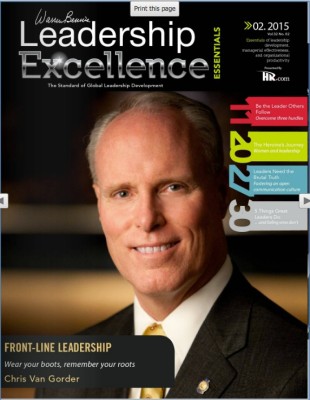Q: Recently, you answered a question about how to spur innovation as a manager. I have the same question, but I am just a secretary. I have used available forums to try and introduce basic best practices but have not had success. I would like to increase efficiency and improve the culture here at work. Any suggestions or encouragement would be appreciated.
—Anonymous
Thank you so much for your email. I am appreciative of readers who are courageous enough to email me in response to a column!
Let me begin by saying that there is no such thing as “just” a secretary. All too often that job title—as well as some others—gets a bad rap. Such a position, if done well, can be a pivotal enabler for not just the employee’s supervisor but also the entire organization.
All public servants, no matter their rank and position, have the potential to create value for America. In the language of business, everyone has a role to play. Some roles may have greater impact and some lesser. Nevertheless, all are important. If creating value is not possible in a certain position, then it should be eliminated.
I love the fact that you want to help advance the culture of your organization. Leading need not come only from the top, with directions and instructions handed down the chain of command. Even those with military experience know leadership needs to come from every level of the organization to achieve effectiveness, efficiency and excellence.
The challenge is when people in formal leadership positions stymie subordinates who try to lead. Instead of empowering staff members, they stifle them. Instead of moving barriers out of the way, those leaders fabricate them. Such behaviors are indicators are of a leader seeking control and compliance instead of commitment and caring. What can you do to innovate and advance your organization’s culture if you are under such a yoke?
Since you are willing to be an informal leader, my advice is similar to what I offered before, but with a few twists. Here are three things to consider:
First, start with you. Shape your own mind-set. How can you ask yourself questions that will change your mind-set? What can you do differently to increase the value you provide to others? Can you ask others to help you discover new opportunities? Focus initially on defining the challenge, opportunity or problem before jumping to a solution. Once you confirm that resolving the challenge will create value, then and only then, start thinking about approaches.
If you come up with a valuable idea, especially if it involves you rewiring only your tasks and activities, then find a way to do it. After a few successes that others can see, experience and acknowledge, start asking incrementally bigger questions. Formulate challenges that may need to involve a few more people, but not too many more—you want to achieve success without the need for too much time and too many resources.
Start small and local to your position. As you succeed, slowly grow in magnitude the challenges that you choose to tackle. With positive attitude and positive outcomes you likely will stimulate others to follow.
Second, an important technique for leading a cultural shift from the lower levels of an organization instead of from the top is something called “appreciated inquiry.” Ask your colleagues about their stories of success. Ask them to tell you about when and how they innovated. Discover the challenges they faced and how they overcame those challenges. Then show your appreciation for what they have done.
Find opportunities to share these narratives with others. Doing so will not only create mutual appreciation and build trust, but it also will have a profound impact on your colleagues. By telling these stories and appreciating others you will capture their attention and focus their mind-set on creating their own stories of innovation. A successful spiral of appreciation about even small innovations will naturally lead to people wanting to do more so they will have new stories to tell and new sources of appreciation.
Third, in some instances my advice will not work and could work against you. If your superordinates and colleagues feel threatened by such actions, then your environment may be toxic beyond your control. While I like to think toxic leaders are relatively small in number, they do exist. If your colleagues put you down and your superordinate does not support you in your efforts, then you might not be in the right organization. Even in a time of austerity, opportunities to transfer or find new positions in the federal government exist. Seek out appreciative and innovative leaders and groups that will bring out the best in you. Otherwise, if you stay in a toxic organization it is only a matter time before, as the saying goes, the frog boils.
My advice is to stay positive. Continually seek out new ways to create value. Uncover stories of innovation. Be appreciative. Become a local source of positivism, not just for yourself but also for your organization. If that doesn’t work, find another organization.
Duce a mente
(May you lead by thinking)







 If your employees are under pressure, then not only are they looking for a quick way to check the box, they likely have developed a mind-set that may be difficult to change. It is easy to rely on existing routines to get things done quickly and punch the next item on the list. In this deep groove, people resist responding to requests for innovative ideas.
If your employees are under pressure, then not only are they looking for a quick way to check the box, they likely have developed a mind-set that may be difficult to change. It is easy to rely on existing routines to get things done quickly and punch the next item on the list. In this deep groove, people resist responding to requests for innovative ideas.

